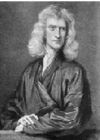Main Page: Difference between revisions
No edit summary |
No edit summary |
||
| (17 intermediate revisions by the same user not shown) | |||
| Line 11: | Line 11: | ||
*[[Syllabus | Syllabus]] | *[[Syllabus | Syllabus]] | ||
*[[Lectures|Lectures]] | *[[Lectures|Lectures]] | ||
*[[ | *[[Hands-on Lab]] | ||
*[[ | *[[Research Projects|Research Projects]] | ||
*[[ | *[[Code Examples|Code Examples]] | ||
*[[Links|Links]] | |||
|}<!-- End Portals --> | |}<!-- End Portals --> | ||
{|style="width:100%;background:none;margin:-.8em 0 -.7em 0" | {|style="width:100%;background:none;margin:-.8em 0 -.7em 0" | ||
|style="font-size:95%;text-align:left;white-space:nowrap;color:#000"| [ | |style="font-size:95%;text-align:left;white-space:nowrap;color:#000"| [https://scholar.google.com/citations?user=IeDlbkIAAAAJ&hl=en Instructor] '''·''' [https://wiki.physics.udel.edu/qttg/Teaching_Web Teaching Web] '''·''' [http://web.physics.udel.edu UD Physics & Astronomy] '''·''' [http://www.udel.edu University of Delaware] | ||
|style="font-size:95%;padding:10px 0;margin:0px;text-align:right;white-space:nowrap;color:#000"| [[Help:Contents|Help]] '''·''' [http://en.wikibooks.org/wiki/LaTeX WikiLaTeX] '''·''' [[Special:Categories|Categories]] '''·''' [[Special:Newimages|Media]] '''·''' [[Special:Allpages|A–Z index]] | |style="font-size:95%;padding:10px 0;margin:0px;text-align:right;white-space:nowrap;color:#000"| [[Help:Contents|Help]] '''·''' [http://en.wikibooks.org/wiki/LaTeX WikiLaTeX] '''·''' [[Special:Categories|Categories]] '''·''' [[Special:Newimages|Media]] '''·''' [[Special:Allpages|A–Z index]] | ||
|} | |} | ||
| Line 23: | Line 24: | ||
|class="MainPageBG" style="width:55%;border:1px solid #cef2e0;background-color:#f5fffa;vertical-align:top;color:#000"| | |class="MainPageBG" style="width:55%;border:1px solid #cef2e0;background-color:#f5fffa;vertical-align:top;color:#000"| | ||
{|width="100%" cellpadding="2" cellspacing="5" style="vertical-align:top;background-color:#f5fffa" | {|width="100%" cellpadding="2" cellspacing="5" style="vertical-align:top;background-color:#f5fffa" | ||
! <h2 style="margin:0;background-color:#cef2e0;font-size:120%;font-weight:bold;border:1px solid #a3bfb1;text-align:left;color:#000;padding:0.2em 0.4em;"> | ! <h2 style="margin:0;background-color:#cef2e0;font-size:120%;font-weight:bold;border:1px solid #a3bfb1;text-align:left;color:#000;padding:0.2em 0.4em;"> What is Computational Physics?</h2> | ||
|- | |- | ||
|style="color:#000"| | |style="color:#000"| | ||
Computational physics is physics done by means of computational methods. Computers do not enter into this tentative definition. The essential point in computational physics is not the use of machines, but the systematic application of numerical techniques and algorithms that approximate physical description of complicated systems. The usage of computational methods in place of, or in addition to, analytical methods, renders accessible to mathematical description as large a part of physical reality as possible. A number of fundamental techniques of our craft were introduced by Newton, Gauss, Jacobi, and other pioneers who lived quite some time before the invention of workable calculating machines. | |||
'''Four Pillars of Computational Methods:''' | '''Four Pillars of Computational Methods:''' | ||
{| cellpadding="1" style="border:0px solid darkgray;" | |||
|- border=0 | |||
| [[Image:newton.gif|thumb|left|100px|[http://homepage.univie.ac.at/franz.vesely/cp_tut/nol2h/new/c1fd_s0fd.html Calculus of differences]]] | |||
| [[Image:jacobi.gif|thumb|right|100px|[http://homepage.univie.ac.at/franz.vesely/cp_tut/nol2h/new/c2la_s0la.html Linear Algebra] ]] | |||
| [[Image:jvn.jpeg|thumb|right|100px|[http://homepage.univie.ac.at/franz.vesely/cp_tut/nol2h/new/c3st_s0st.html Stochastic Methods]]] | |||
| [[Image:life.gif|thumb|right|100px|[http://www.math.com/students/wonders/life/life.html Complexity]]] | |||
|} | |||
To be sure, nobody in his right state of mind would apply stochastic methods by throwing dice, and the iterative solution of differential equations is feasible only in conjunction with the high computing speed. Nevertheless, computational physics is much more than "Physics Using Computers." | To be sure, nobody in his right state of mind would apply stochastic methods by throwing dice, and the iterative solution of differential equations is feasible only in conjunction with the high computing speed. Nevertheless, computational physics is much more than "Physics Using Computers." | ||
Why is computation becoming so important in physics? One reason is that most of analytical tools, such as differential calculus, are best suited to the analysis of linear problems. However, many natural phenomena are nonlinear and are, therefore, extremely sensitive to small changes in variables. Another incentive to employ computational methods are systems with many degrees of freedom. Moreover, asking questions like "How can I formulate the problem on a computer?" has led to new formulation of scientific laws as rules for a computer rather being expressed in terms of differential equations (thus, viewing computer as a physical systems one can try to develop novel computer architectures that would model physical systems in nature more efficiently). | Why is computation becoming so important in physics? One reason is that most of analytical tools, such as differential calculus, are best suited to the analysis of linear problems. However, many natural phenomena are nonlinear and are, therefore, extremely sensitive to small changes in variables. Another incentive to employ computational methods are systems with many degrees of freedom. Moreover, asking questions like "How can I formulate the problem on a computer?" has led to new formulation of scientific laws as rules for a computer rather being expressed in terms of differential equations (thus, viewing computer as a physical systems one can try to develop novel computer architectures that would model physical systems in nature more efficiently). | ||
|}<!-- Start of right-column --> | |}<!-- Start of right-column --> | ||
| Line 44: | Line 58: | ||
|- | |- | ||
|style="color:#000"|{{Lecture in Progress}} | |style="color:#000"|{{Lecture in Progress}} | ||
|- | |- | ||
! <h2 style="margin:0;background:#FFE680;font-size:120%;font-weight:bold;border:1px solid #a3b0bf;text-align:left;color:#000;padding:0.2em 0.4em;">Course Motto</h2> | ! <h2 style="margin:0;background:#FFE680;font-size:120%;font-weight:bold;border:1px solid #a3b0bf;text-align:left;color:#000;padding:0.2em 0.4em;">Course Motto</h2> | ||
Latest revision as of 09:16, 27 October 2022
|
|
| Instructor · Teaching Web · UD Physics & Astronomy · University of Delaware | Help · WikiLaTeX · Categories · Media · A–Z index |
|
|
Wiki Getting Started
Consult User's Guide for information on using the wiki software.




